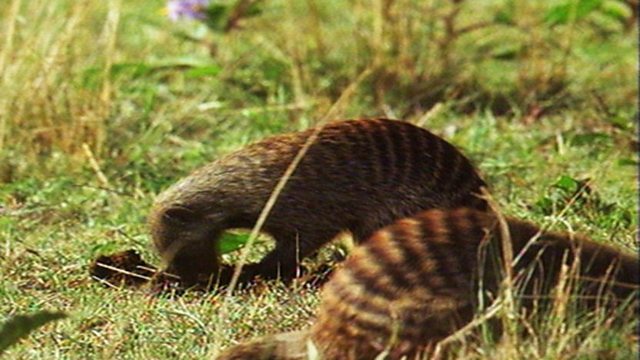
Banding together
Social sophistication allows mongooses to hunt in daylight.
The story of how an elite group of mongooses broke the mould starts about 7 million years ago. At that time there was an event of great significance to the evolution of mammals. The climate was becoming drier and the forests were being replaced by open grasslands. A multitude of grazing animals evolved to take advantage of the new conditions. These huge herds produced huge amounts of dung which then became an opportunity for insects. While lions lived off the herbivores, the new mongooses benefitted in a more indirect fashion. The insects, particularly the dung beetles, became their prey. But to benefit from this bounty the mongooses had to feed during the day when the insects could be easily found. They had to overcome the problem of being both predator and prey. Suricates, or meerkats, are small mongooses that live in the Kalahari desert of southern Africa. Their problem is that they must look down to find their food, but at the same time must look up for potential winged hunters. The meerkats have coped by becoming some of the most sophisticatedly social of all mammals. They hunt together for insects, scorpions and small reptiles, but while the rest of the gang rummage, one meerkat goes aloft to scan the horizon for danger. Having this full-time sentinel reduces the need for the others to keep looking up, and enables them to hunt more successfully.
Duration:
This clip is from
More clips from It's Tough At The Top
-
![]()
Bringing up baby
Duration: 01:23
-
![]()
Early birds
Duration: 02:07
More clips from The Velvet Claw
-
![]()
Lynx to sand cat—Sharpening the Tooth
Duration: 01:57
-
![]()
Carnivore queens—The Rich Man's Table
Duration: 03:42
-
![]()
Enfants terribles—The Rich Man's Table
Duration: 03:37
-
![]()
Co-operative dogs—Strength in Numbers
Duration: 01:25







